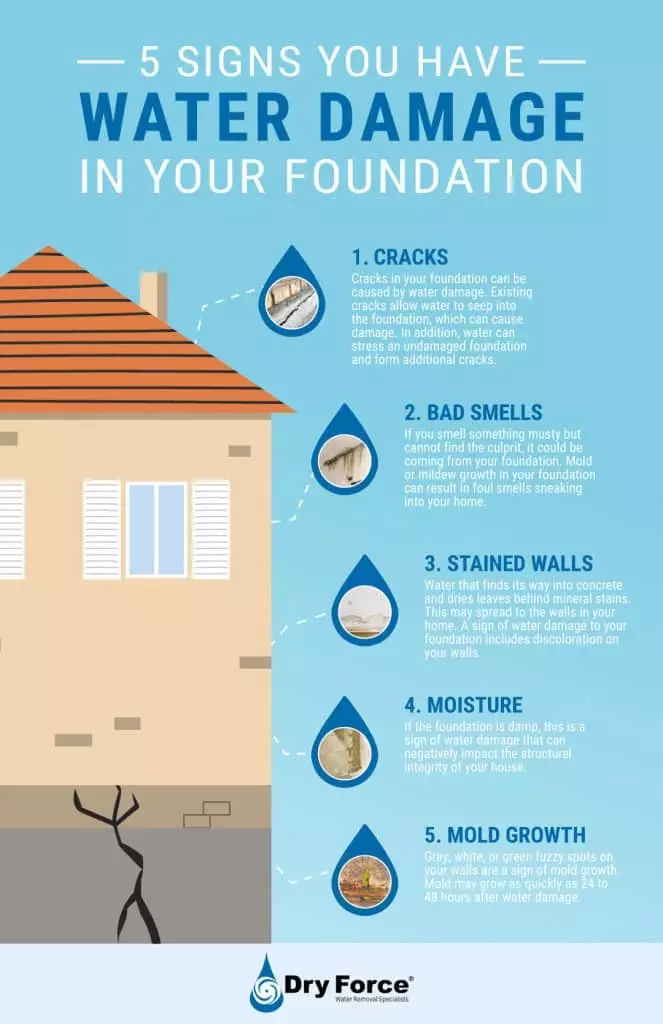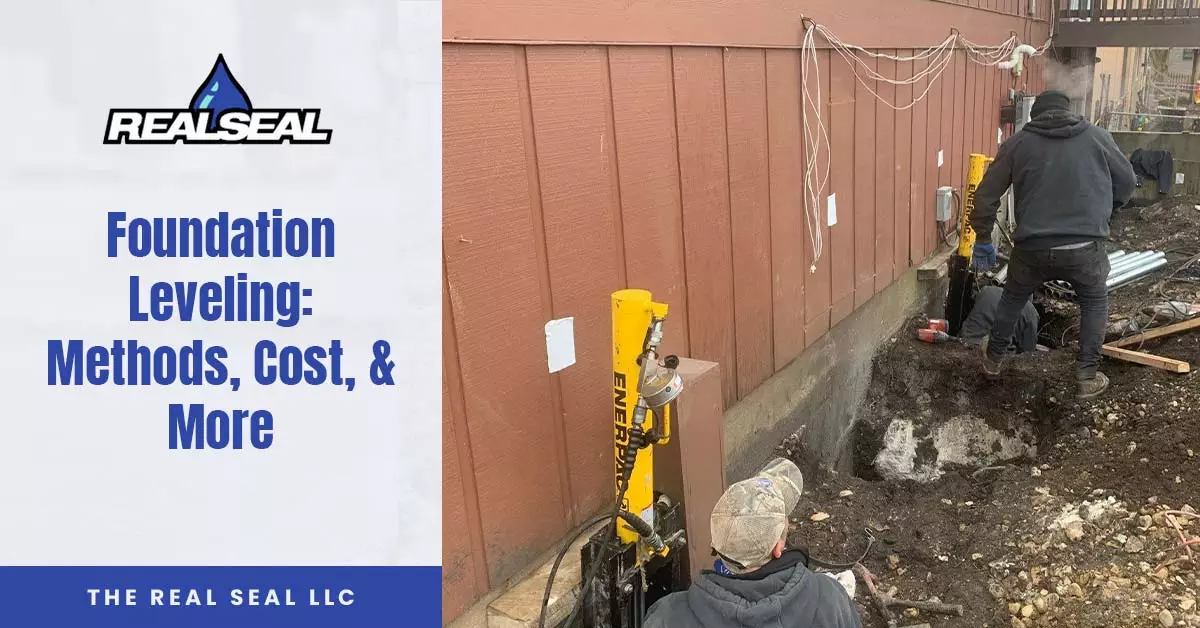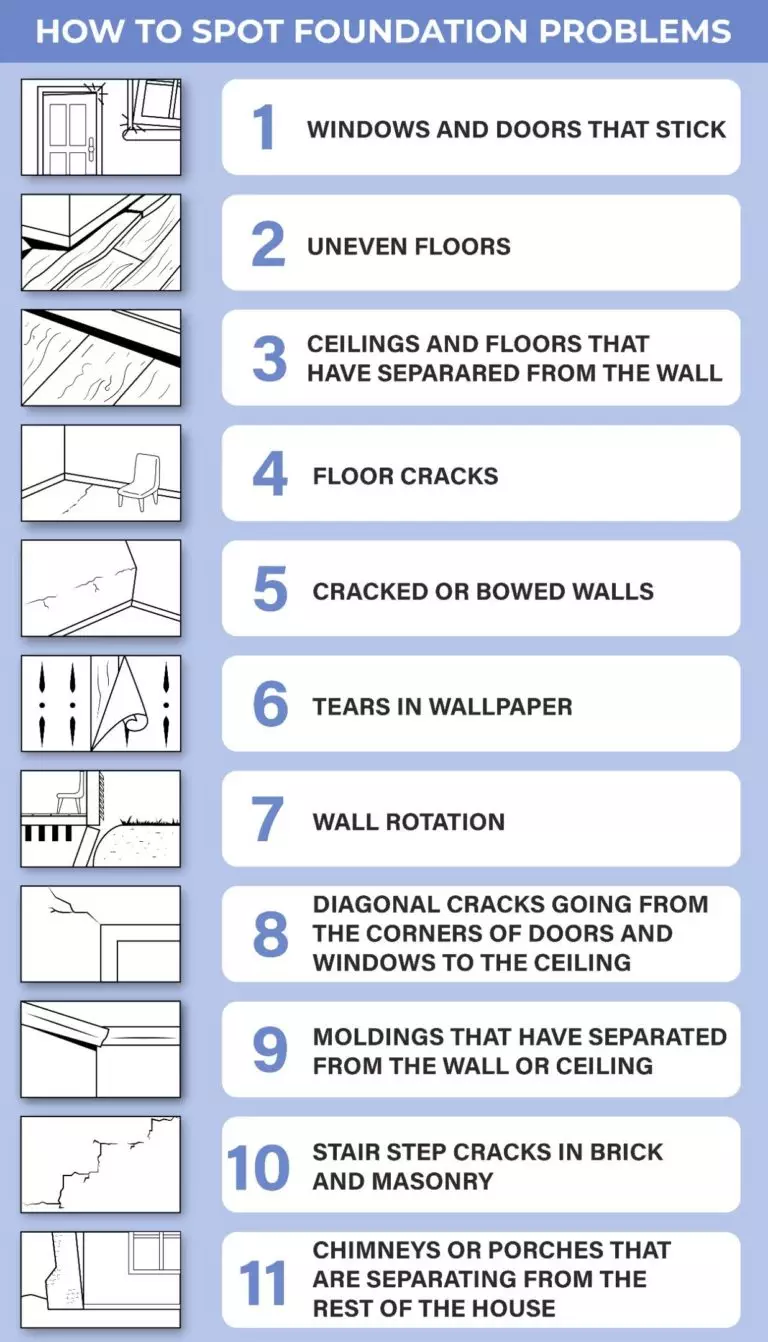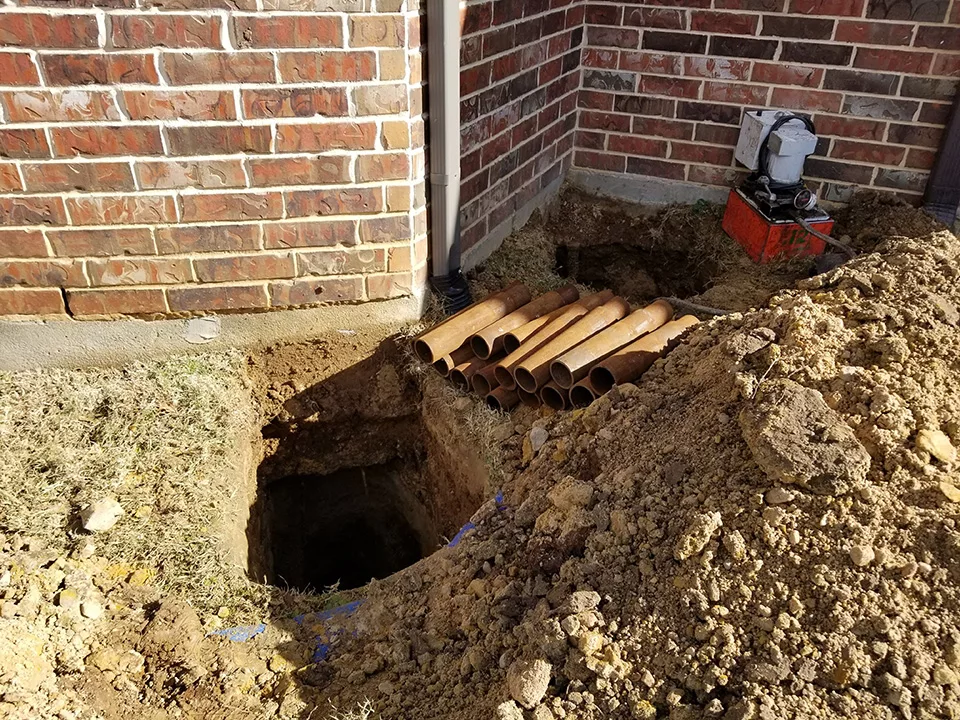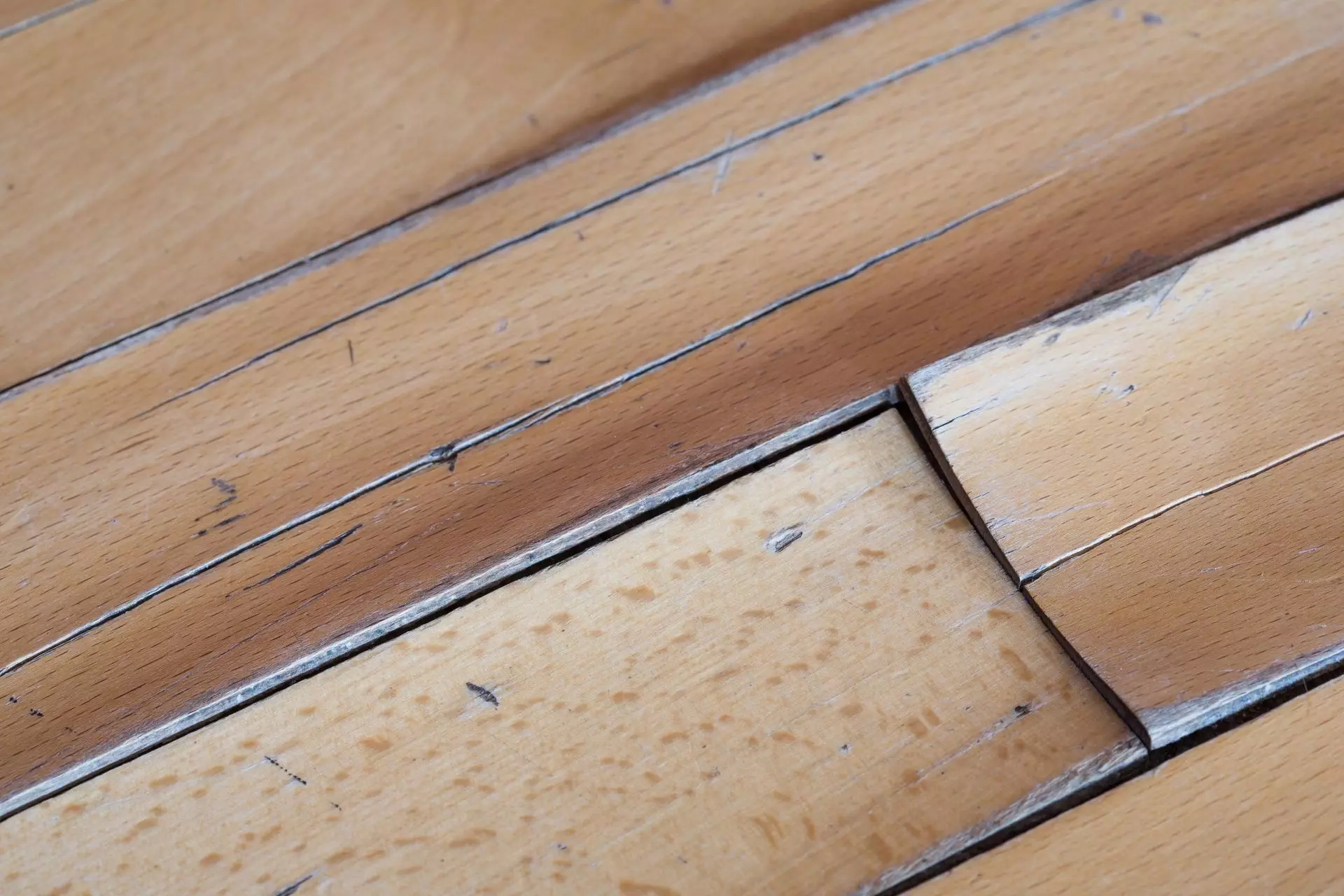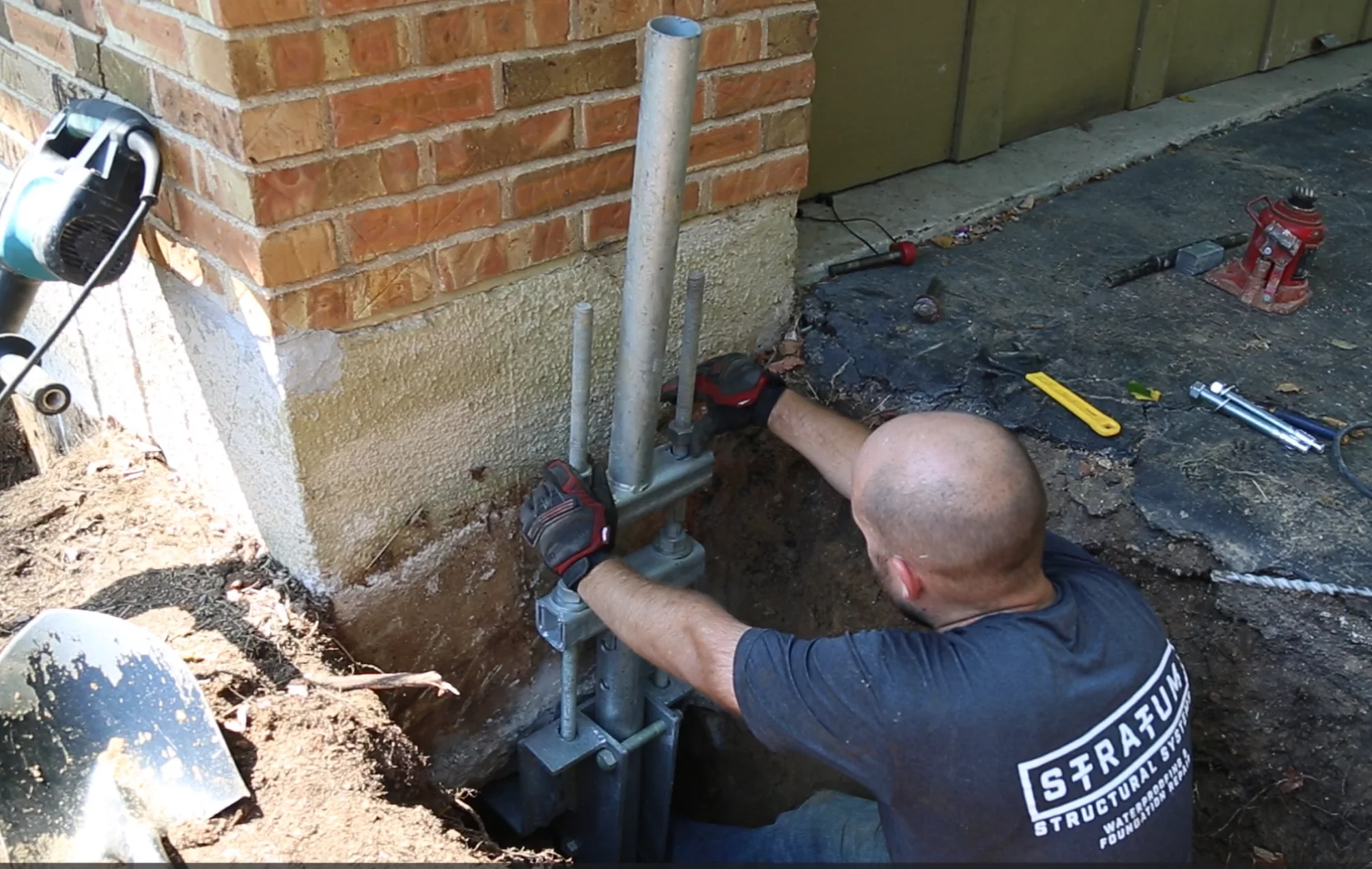
Why Settling Foundation Issues Arise (And How to Fix Them)
Imagine walking through your home and noticing a slight tilt in your floors or a stubborn door that no longer closes properly. These can be signs of a settling foundation. If you’ve ever wondered why this happens, it often starts with the soil beneath your home. Soil erosion and changes can lead to unwanted shifts, affecting the structural integrity of your house. Foundation settlement causes headaches, but understanding them is the first step toward finding a lasting solution.
You might see other clues like cracks in walls or uneven flooring. These foundation settling signs signal that it’s time to take action. Foundation inspection and repair are key to preventing further damage. Discovering effective solutions, like foundation stabilization, can save you from costly repairs down the line. Addressing these home foundation issues early ensures your home remains safe and secure.
Curious about why these issues happen and what you can do? Keep reading to learn more about foundation cracks, repair methods, and maintaining your home’s strength. Your peace of mind starts here.
Within the post
Understanding Settling Foundation
Have you ever wondered why your home’s foundation might settle over time? Settling foundation is a common issue many homeowners face. It can cause various problems if not handled properly. You need to understand what causes these issues in the first place. By knowing the reasons, you can take steps to fix them and protect your home.
Foundation Settlement Causes
First, let’s talk about the weather. You might not realize it, but weather can greatly affect your home’s foundation. Changes in temperature, rainfall, and humidity can make the ground under your house expand and contract. This movement can lead to settling.
Another big factor is soil conditions. Different types of soil react differently to weather changes. Some soils, like clay, can hold a lot of water. When they dry out, they shrink, causing your foundation to shift. Excess moisture, like heavy rain or flooding, can also be a problem. When the ground gets too wet, it can’t support your house as well, leading to settling.
Natural foundation shifts are another cause. Even if the soil and weather are perfect, the ground can still move over time. This is more common in areas with a lot of earthquakes or other natural events that cause the earth to shake. All these factors can lead to your foundation settling.
Foundation Settling Signs
So, how do you know if your foundation is settling? Cracks are one of the most obvious foundation settling signs. You might see them in your walls, floors, or even the exterior of your home. These cracks can be small at first but tend to get larger over time if not addressed.
Another sign is tilting structures. If you notice that your home seems to be leaning or you have a chimney that is tilting away from your house, this could mean there’s a problem with your foundation.
Uneven floors are also a common sign. If you feel like you’re walking up and down a hill inside your house, it could be due to a settling foundation. Doors and windows that don’t close properly can also indicate an issue. They might stick or not fit in their frames as well as they used to.
Methods of Foundation Repair
Foundation Inspection Importance
Regular foundation inspection is crucial. It’s like giving your house a check-up. You can catch problems early before they become bigger issues. During inspections, experts can detect early signs of cracks and other problems.
- Detect early foundation cracks.
- Prevent large structural issues.
These inspections ensure your house remains safe and stable. They help you avoid expensive repairs by addressing small issues before they grow.
Impact of Soil on Foundation
The type of soil your house sits on is very important. Different soils react in various ways to environmental changes. Understanding these reactions can help you to manage your home’s foundation better.
Soil Erosion Impact
Soil erosion is a big deal. It happens when water, wind, or ice wear away the soil around your home. As the soil moves, it can take away the support your foundation needs.
When soil degrades, it doesn’t hold your house up as well. This can lead to uneven settling and even damage to the structure of your home. Common signs of erosion include gullies, exposed roots, and sediment in waterways.
But, there are ways to prevent soil erosion. Planting grass or shrubs can help hold the soil in place. You might also consider installing barriers or retaining walls to keep soil from washing away.
Managing Soil Conditions
You can use soil stabilization techniques to keep your foundation strong. This might include adding certain materials to the soil to make it more stable. You could also consider soil treatment options that maintain the right moisture level.
These methods help ensure the ground under your home stays consistent and adequately supports your foundation.
Foundation Stabilization Techniques
When it comes to stabilizing your foundation, there are several methods available. Each method has its pros and cons, and the right choice depends on your specific situation.
Foundation Stabilization Processes
One common technique is underpinning. This involves strengthening the foundation by extending it deeper into the ground, reaching a more stable layer of soil. Underpinning can effectively stop further settlement and in some cases, even raise parts of the house back to their original position.
Other methods include mudjacking, where a slurry is pumped beneath a sunken concrete slab to raise it, and piering, which uses steel posts to stabilize the foundation. Each of these methods has its benefits, and choosing the right one can depend on factors like the cause of settling and the extent of the damage.
Preserving Structural Integrity
Keeping your home strong requires regular attention and care. This isn’t just about fixing problems as they arise but also taking preventive measures.
Protecting Your Home
Routine maintenance practices are crucial for protecting your home. This includes regularly checking for signs of damage and cracks. Fix problems promptly to prevent them from worsening. Staying on top of these issues ensures your home stays safe.
Another important aspect is prompt repairs. If you notice anything wrong, don’t wait. The longer you put off repairs, the more damage can occur. Addressing problems quickly can save you a lot of time and money in the long run.
For ongoing protection, consider things like maintaining proper drainage around your home, checking your gutters, and ensuring that water flows away from your foundation.
Foundation Cracks and Repairs
Dealing with cracks is a common part of maintaining a home. There are many foundation crack repair methods available. For minor cracks, you might use a sealant that can prevent moisture from getting in. But for larger issues, professional help might be necessary.
Professional assistance can ensure the job is done correctly. Experts have the tools and knowledge to fix significant problems. While it might be tempting to tackle some repairs yourself, always consider consulting a professional first.
If you do attempt DIY repairs, take precautions. Make sure you fully understand the process and use the right materials. Remember, proper repairs can make a big difference in the long-term stability of your home.
Professional Foundation Assistance
Choosing a Reliable Contractor
Finding a good contractor is key to solving foundation issues. Start by researching potential experts. Look for professionals with a good track record and experience. Ask others for recommendations to find someone trustworthy.
Evaluating Repair Costs
Understanding repair costs can be tricky. Several factors can affect prices, like the extent of damage and the method of repair. While it might be tempting to choose the cheapest option, consider the long-term value and quality of the repair. Investing in property safety and stability is worth it.
Long-term Benefits of Repair
Repairing your foundation isn’t just about fixing problems; it’s about ensuring your home’s future. A strong foundation enhances home stability and can even improve resale value. Plus, knowing your home is safe brings peace of mind.
Preventing Future Settling Issues
It’s always better to prevent problems rather than fix them. By taking specific steps, you can help stop your foundation from settling in the future.
Routine Maintenance Practices
Outline a regular inspection schedule for your home. This helps catch problems early. Also, monitor your landscape. Ensure plants and trees are not too close to your home as their roots can affect the soil.
Drainage management is also vital. Make sure water flows away from your foundation to prevent erosion and excess moisture.
Early Detection Measures
Detecting issues early can save you a lot of trouble. Use technology, like sensors or monitoring systems, to keep an eye on your foundation. If you notice any warning signs, engage professionals as needed. Proactive measures are key to protecting your home long-term.
Take Control of Your Home’s Stability
Understanding foundation issues gives you the power to protect your home. By recognizing early signs like cracks and knowing the causes like soil erosion, you can prevent bigger problems. Acting on this knowledge helps maintain your home’s value and ensures a safe environment for your family.
Start by scheduling a foundation inspection with a trusted professional. This gives you a clear picture of your home’s current state. If any issues arise, consider foundation stabilization methods to reinforce your home’s structural integrity. With a plan in place, you can address repairs confidently.
Don’t wait for problems to worsen. Take the first step by calling a foundation expert today. Your action now can save time, money, and worry in the future. Make the call and secure your home’s foundation today.
